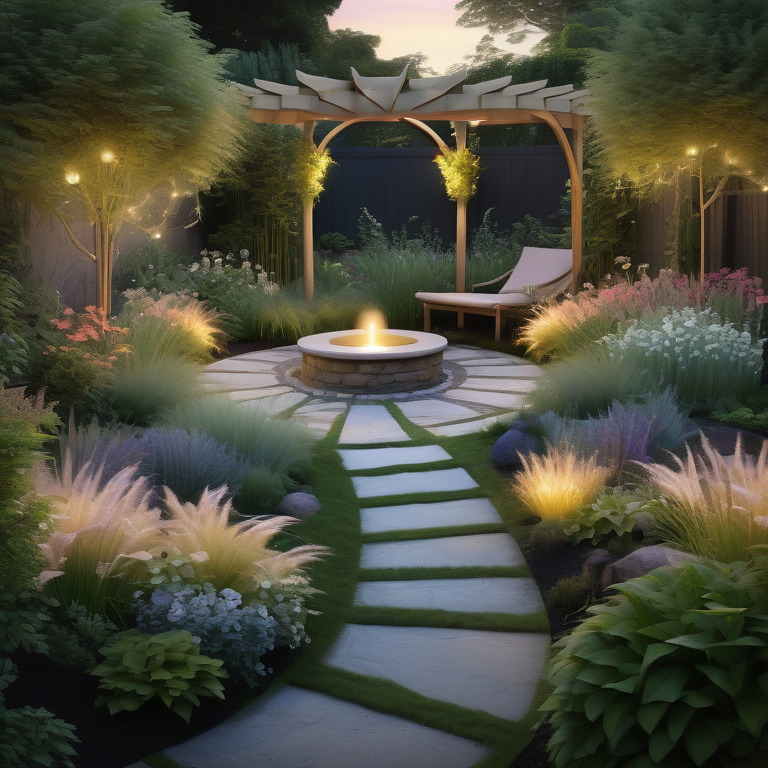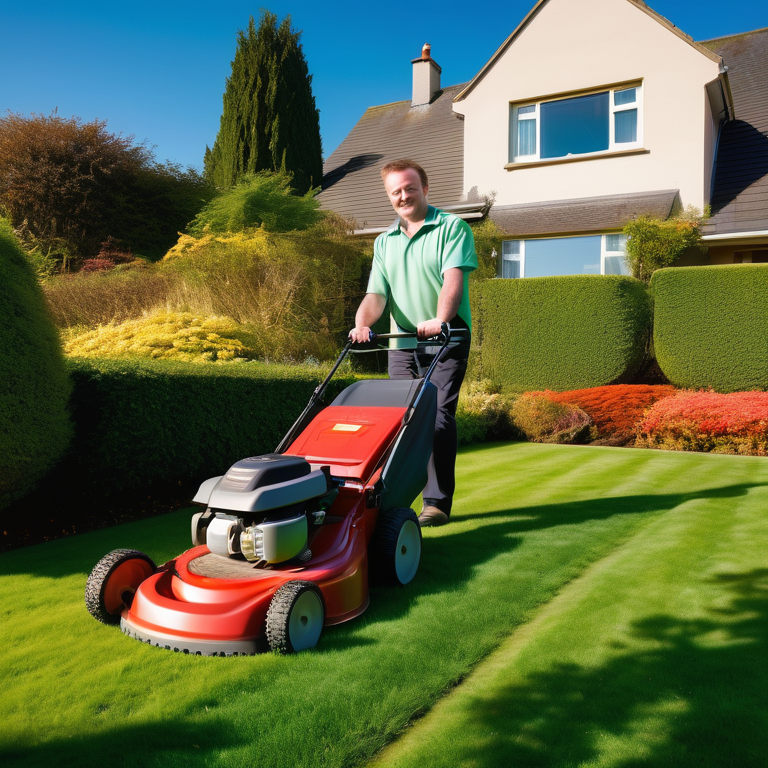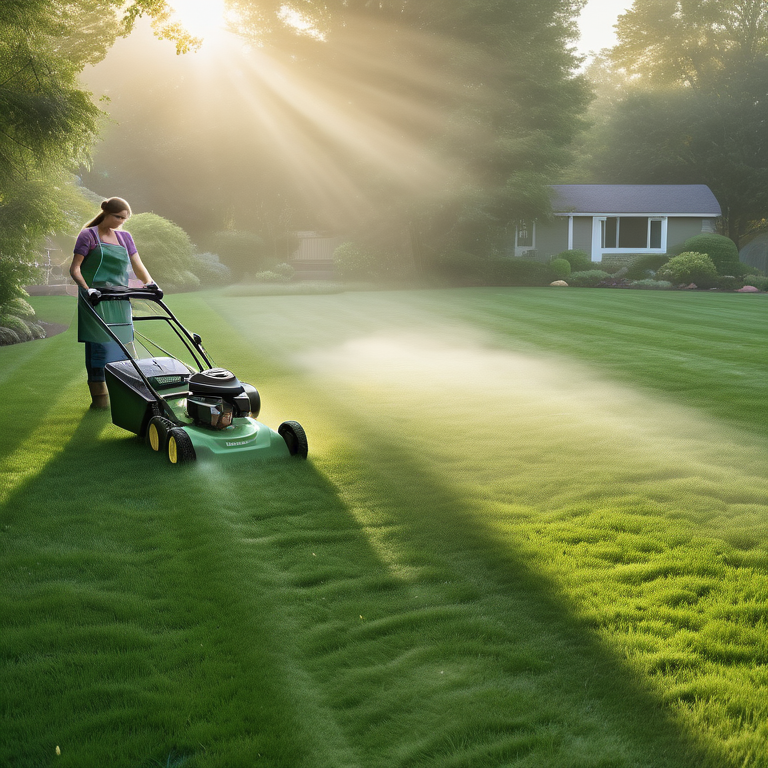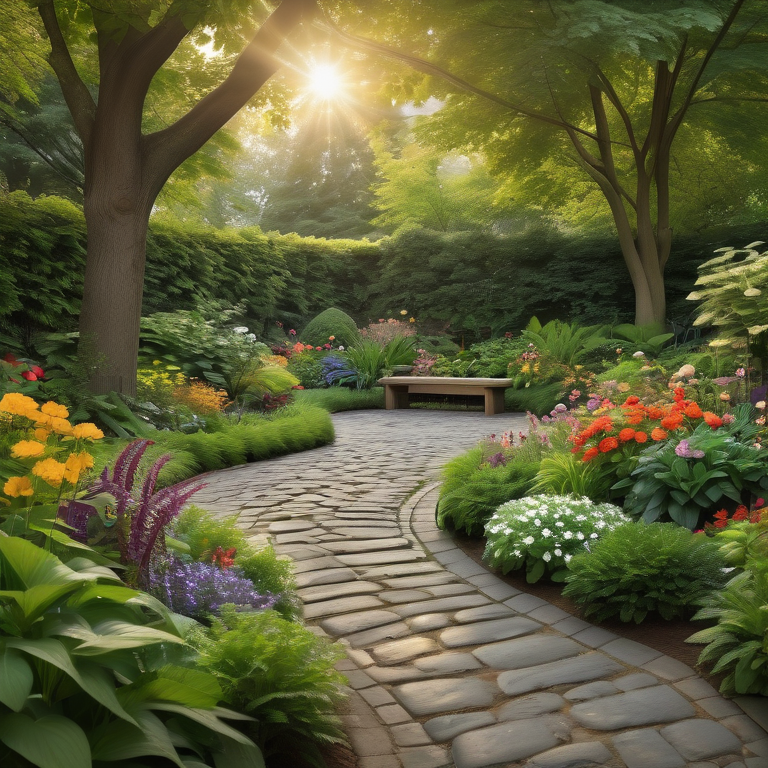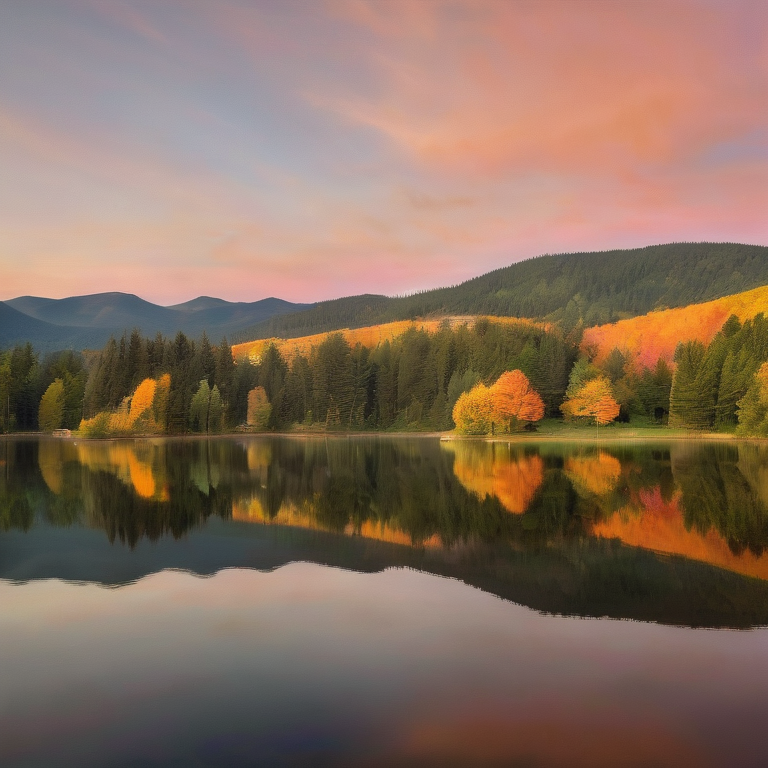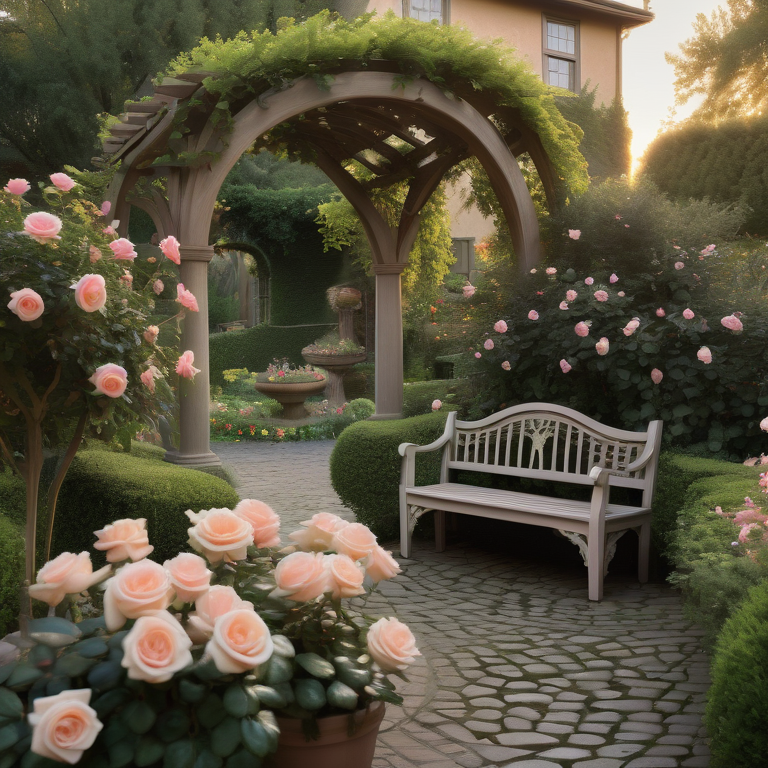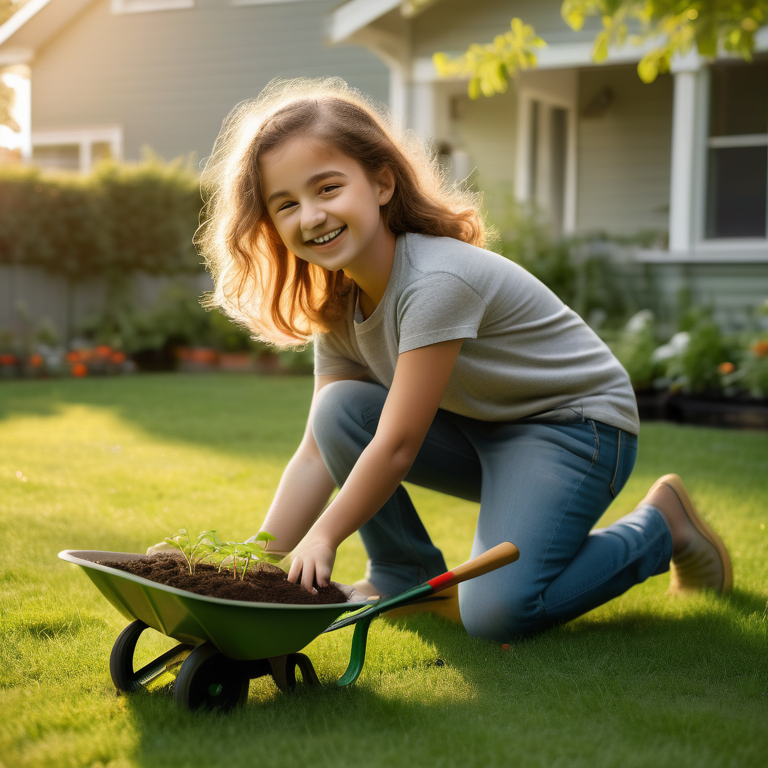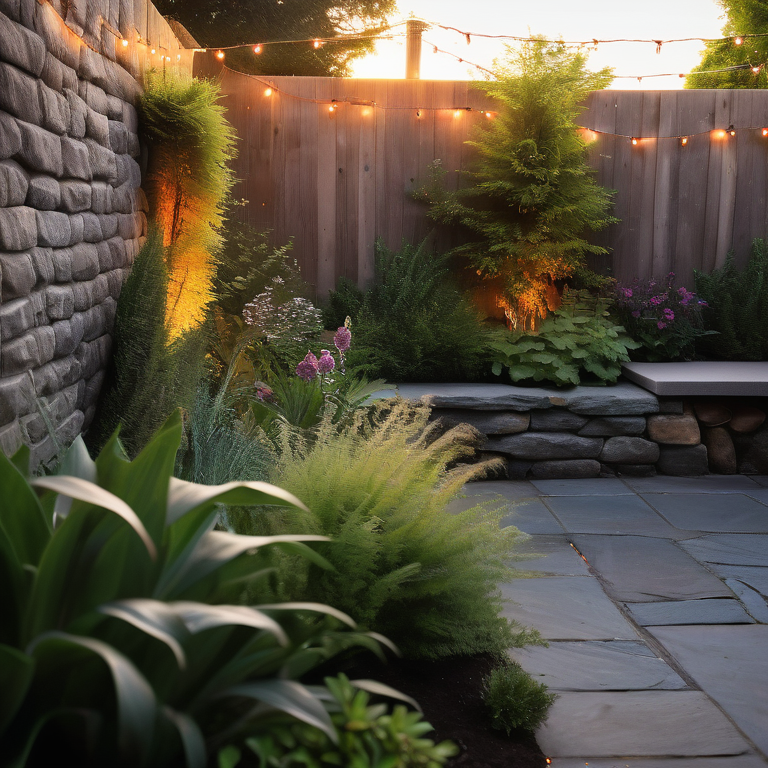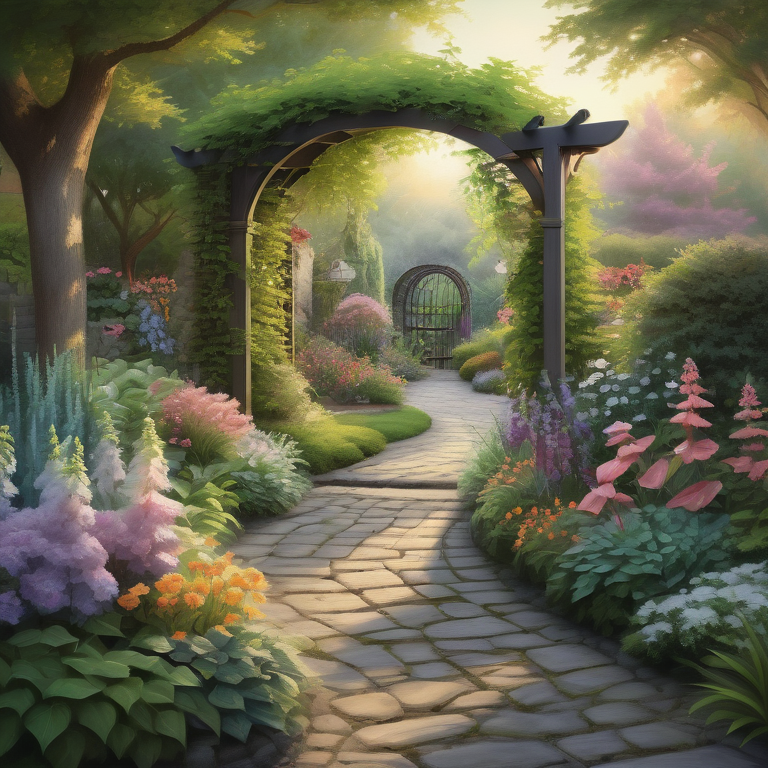Key Highlights
Key Highlights:
- Transforming your back garden can create stunning outdoor space for you to enjoy.
- Incorporating features such as a living wall and fire pit can add unique elements to your garden design.
- Strategic planting, tree structures, and pathways can enhance the visual appeal and functionality of your outdoor space.
- Choosing the right furniture, fences, and screens can create boundaries and privacy in your garden.
- Adding personal touches with garden lighting, ornaments, and water features can make your outdoor space truly special.
Introduction
Welcome to our blog on the top 10 back garden designs to transform your outdoor space. Your back garden is a valuable extension of your home, and with the right design, you can create an inviting and functional space for relaxation, entertainment, and connecting with nature. Whether you have a small courtyard or a spacious backyard, or even a front garden, there are endless possibilities to enhance the beauty and functionality of your outdoor area.
In this blog, we will explore 10 inspiring back garden designs that will revitalize your outdoor space. From sculpting the perfect lawn to incorporating levels and steps, we will discuss various elements and features that can transform your garden into a true oasis. We will also provide tips on choosing the right furniture, fences, and screens, as well as incorporating personal touches through garden lighting, ornaments, and water features. Whether you’re looking for sustainable garden ideas, wildlife-friendly designs, or simply want to boost your property value, these garden design ideas will help you create a space you’ll love for years to come.
So, if you’re ready to take your back garden to the next level, let’s dive into these exciting garden design ideas and create a stunning outdoor space that you can enjoy for years to come.
10 Inspiring Back Garden Designs to Revitalize Your Outdoor Area
Creating a beautiful and functional back garden starts with thoughtful garden design. Here are 10 inspiring ideas to revitalize your outdoor area:
1. Sculpting the Perfect Lawn: A Foundation for Beauty
A well-maintained lawn sets the foundation for a beautiful back garden. Consider the shape and size of your lawn, as well as its maintenance requirements. Incorporating a seating area within the lawn can create a cozy space for relaxation or outdoor dining. Adding window boxes or raised beds around the edges of the lawn can further enhance its visual appeal and provide opportunities for gardening. www.wicklowlandscaping.ie
2. Strategic Planting: Enhancing Visual Appeal
Strategic planting can transform your back garden into a vibrant and visually appealing space. Consider the amount of sunlight your garden receives and choose plants accordingly. Incorporating small shrubs and flower beds can add texture and color to your garden design. You can also create focal points with statement plants or create a lush green backdrop with climbing plants or a living wall. www.wicklowlandscaping.ie
3. The Magic of Trees: Creating Structure and Shade
Trees are not only beautiful but also serve practical purposes in a back garden. They provide shade on hot summer days and create a sense of privacy. Incorporating different types of trees can add depth and structure to your garden design. Consider the placement of tree branches to create natural archways or canopies. You can also use trees to frame certain areas of your garden or provide a backdrop for other features.
4. Paving the Way: Paths and Patios
Paths and patios are essential elements in any back garden design. They provide functional and aesthetic value, allowing easy access to different areas of the garden and creating spaces for outdoor seating or dining. Consider using different materials such as stone or concrete for your paths and patios to create visual interest and minimize hard work. Incorporating patterns or unique shapes can add a touch of creativity to your garden design. www.wicklowlandscaping.ie
5. Elevating Design: Introducing Levels and Steps
Incorporating different levels in your garden design adds depth and visual interest. By creating terraces or raised platforms, you can create distinct areas within your back garden. Steps can be used to connect these levels and create a seamless flow. Consider using materials such as timber or stone for steps and platforms, ensuring they blend harmoniously with the overall design of your outdoor space. It’s always a good idea to elevate your design with levels and steps, as it adds a unique touch and creates a flow between your indoor and outdoor spaces. www.wicklowlandscaping.ie
6. Outdoor Living: Choosing the Right Furniture
Choosing the right furniture is crucial in creating a comfortable and inviting outdoor living space. Whether you prefer a cozy seating area or a dining space for entertaining guests, selecting furniture that complements your garden design is essential. Consider the material, size, and style of the furniture to ensure durability and visual harmony with the surrounding elements. Don’t forget to incorporate cushions, throws, and other accessories to add comfort and style to your outdoor seating area.
7. Boundaries Redefined: Fences and Walls
Fences and walls not only provide privacy but also define the boundaries of your back garden. Choosing the right fencing material and style, such as garden fencing, is important to ensure both functionality and aesthetics. Use paint to trick the eye and draw attention to your fences, creating the illusion of extra height and space. A simple two-tone block colour treatment can jazz up any expanse of garden fencing. Pay attention to the quality of workmanship to ensure durability and longevity of your fences or walls. www.wicklowlandscaping.ie
8. Zoning for Privacy: Screens and Hedges
Creating privacy in your back garden can be achieved through the use of screens and hedges. Screens can be made from materials such as bamboo or fabric and can be used to block unsightly views or create secluded areas within your garden. Hard landscaping, such as pergolas or fences, can also be used to create privacy and divide the space into separate “rooms”. Hedges, on the other hand, provide a natural and green boundary that can be shaped to your desired height and thickness. By strategically placing screens, hedges, and hard landscaping, you can create private and peaceful areas in your outdoor space. www.wicklowlandscaping.ie
9. The Fifth Room: Accessorizing with Style
Accessories can add the finishing touches and make your back garden feel like an extension of your home. Garden lighting can create a magical ambiance in the evenings and highlight the beauty of your outdoor space. Consider incorporating solar-powered lights, lanterns, or string lights for a cozy and inviting atmosphere. A fire pit can also be a great addition, providing warmth and a focal point for gatherings and cozy nights in your back garden.
10. Personal Touches: Ornaments and Features
Adding personal touches to your back garden can make it truly unique and reflective of your style. Incorporate ornaments, sculptures, or art pieces that resonate with you and enhance the overall design of your outdoor space. Consider features such as water fountains, bird baths, or wind chimes to add a touch of tranquility and serenity to your garden. By infusing your personality and creativity into your garden design, you can create a space that is truly one-of-a-kind. www.wicklowlandscaping.ie
Key Takeaways in Back Garden Design
In summary, back garden design is an art that involves thoughtful planning and consideration of various elements. By incorporating features such as sculpted lawns, strategic planting, tree structures, paths and patios, levels and steps, outdoor furniture, boundaries, screens and hedges, accessories, and personal touches, you can transform your outdoor space into a stunning oasis with good design. Remember to choose materials, styles, and features that not only enhance the visual appeal of your garden but also suit your lifestyle and preferences.
Understanding the Basics: What You Need to Know
Before embarking on your back garden design journey, it’s essential to understand the basics. Consider factors such as the size and shape of your garden, including if it is a narrow garden, the amount of sunlight it receives, and your desired functionality. It’s also important to establish a budget and prioritize your must-have features. By having a clear understanding of these basics, you can make informed decisions and create a design that meets your needs and preferences.
The State of Garden Design: Trends and Innovations
Garden design is an ever-evolving field, with new trends and innovations constantly emerging. Stay updated on the latest garden design trends, materials, and technologies to ensure your outdoor space is both stylish and functional. From eco-friendly practices and sustainable materials to smart gardening solutions, there are endless possibilities to explore. Keep an eye on garden design blogs, magazines, and social media platforms to gain inspiration from experts like garden designer Ann-Marie Powell and stay ahead of the curve. www.wicklowlandscaping.ie
Main Arguments: Why Design Matters
Design matters when it comes to your back garden because it impacts the overall aesthetics, functionality, and enjoyment of your outdoor space. A well-designed garden not only enhances the beauty of your home but also creates a welcoming environment for relaxation and entertainment. It allows you to make the most of your outdoor area and connect with nature. Additionally, a thoughtfully designed garden with quality workmanship can increase the value of your property and create a sense of pride and satisfaction.
Enhancing Your Garden Experience
Creating a beautiful and functional back garden is all about enhancing your garden experience. By incorporating elements such as lighting and wildlife-friendly spaces, you can create a magical and inviting outdoor environment. Let’s explore these aspects further.
Lighting: Illuminating Your Nights
Garden lighting plays a crucial role in creating an enchanting atmosphere in your back garden. Consider installing outdoor lights along pathways, around seating areas, and highlighting focal points such as trees or sculptures. Choose warm and inviting lighting options to create a cozy ambiance during the evenings. Solar-powered lights are an eco-friendly and cost-effective choice. With the right lighting, you can enjoy your garden even after the sun goes down. www.wicklowlandscaping.ie
Wildlife-Friendly Spaces: Encouraging Biodiversity
Creating wildlife-friendly spaces in your back garden not only adds beauty but also supports biodiversity and contributes to a healthy ecosystem. Incorporate native plants, wildflowers, and bird feeders to attract and provide food for various species. Install birdhouses, insect hotels, or small ponds to provide shelter and water sources. Encouraging wildlife in your garden adds a sense of joy and wonder, as well as contributing to the overall balance of nature. www.wicklowlandscaping.ie
Maximizing Small Spaces
Having a small back garden doesn’t mean you can’t create a stunning outdoor space. With innovative solutions and clever design choices, you can maximize every inch of your small garden. Let’s explore some ideas for small spaces.
Innovative Solutions for Limited Areas
In small spaces, it’s important to make the most of vertical and horizontal surfaces. Consider vertical gardening techniques such as using trellises, wall-mounted planters, or hanging baskets to add greenery without taking up valuable floor space. Utilize compact furniture and multifunctional pieces to create seating and dining areas, making it both stylish and low maintenance. Incorporate mirrors to create an illusion of space. By thinking creatively and maximizing every corner, you can transform your small garden into a cozy and inviting retreat. www.wicklowlandscaping.ie
Vertical Gardening: Growing Upwards
Vertical gardening is an excellent solution for small gardens or limited outdoor spaces. It allows you to grow plants vertically, utilizing walls, trellises, or hanging containers. Here are some tips for successful vertical gardening:
- Choose plants that thrive in vertical environments, such as climbing vines or trailing flowers.
- Install trellises or wire grids on walls or fences to provide support for climbing plants.
- Use hanging baskets or wall-mounted planters to add greenery without taking up floor space.
- Consider utilizing a vertical garden system, such as a living wall or modular planter system.
- Ensure proper irrigation and drainage to support the growth of your vertical garden.
Conclusion
Transform your outdoor space with these top 10 back garden designs. From sculpting the perfect lawn to incorporating water features, each element plays a crucial role in revitalizing your outdoor area. Understanding the basics, current trends, and why design matters are key takeaways to enhance your garden experience. Maximizing small spaces through innovative solutions and vertical gardening offers creative alternatives. Addressing FAQs like plant selection and maintenance tips ensures a beautiful garden year-round. Dive into eco-friendly practices and create an inviting, sustainable oasis right in your backyard. www.wicklowlandscaping.ie
Frequently Asked Questions
How Can I Make My Back Garden More Inviting?
To make your back garden more inviting, consider the following:
- Create a comfortable seating area with cozy furniture.
- Incorporate garden lighting to create an enchanting ambiance.
- Add a fire pit for warmth and a focal point.
- Choose inviting plants and flowers to add color and fragrance.
- Incorporate personal touches such as ornaments or wind chimes.
What Are the Best Plants for a Back Garden?
The best plants for a back garden depend on the amount of sunlight it receives. For partial sun areas, consider small shrubs, perennials, and flowers that thrive in shade or dappled sunlight. For full sun areas, opt for sun-loving plants such as roses, lavender, and colorful annuals.
How Do I Choose the Right Garden Furniture?
When choosing garden furniture, consider factors such as durability, comfort, and style. Opt for high-quality materials that can withstand outdoor conditions. Ensure that the furniture is comfortable and suits your desired seating area. Pay attention to workmanship and finishes for long-lasting quality.
Can I Design a Garden That’s Easy to Maintain?
Yes, you can design a garden that’s easy to maintain. Opt for low-maintenance plants, such as native species or drought-tolerant varieties. Incorporate features such as mulching, weed membranes, and automated irrigation systems to reduce the need for constant upkeep. Plan a design that minimizes heavy gardening tasks.
Tips for Incorporating Water Features
When incorporating water features into your back garden, consider the following tips:
- Choose the right size and style of water feature that complements your garden design.
- Ensure proper installation and maintenance to prevent leaks and potential water damage.
- Incorporate water plants and fish to enhance the natural ecosystem of your water feature.
- Consider the sound of running water and its impact on the overall ambiance of your garden.
How to Create a Garden That Looks Great Year-Round
Creating a garden that looks great year-round requires careful planning and design. Choose a variety of plants that bloom or have visual interest during different seasons. Incorporate evergreen shrubs or trees for structure and color. Regular garden maintenance, such as pruning and weeding, is essential to keep your garden looking its best throughout the year.
What Are Some Eco-Friendly Gardening Practices?
To practice eco-friendly gardening, consider the following:
- Incorporate native plants that support local biodiversity.
- Use organic fertilizers and natural pest control methods.
- Collect rainwater for irrigation.
- Compost kitchen scraps and garden waste.
- Minimize the use of chemical pesticides and herbicides.

